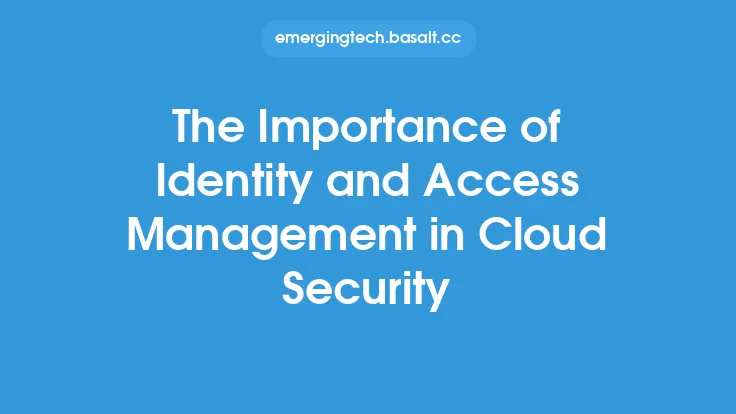The integration of blockchain technology in wealth management has been a significant development in the fintech industry. Blockchain, initially known for its role in cryptocurrency transactions, has proven to be a versatile technology that can enhance security, transparency, and efficiency in various financial services, including wealth management. At its core, blockchain is a distributed ledger technology that allows for the recording of transactions across a network of computers, ensuring that the data is immutable and tamper-proof. This inherent security and transparency make blockchain an attractive solution for wealth management, where the integrity and confidentiality of financial data are paramount.
Introduction to Blockchain in Wealth Management
Wealth management involves a complex array of services, including investment advice, portfolio management, and financial planning, all of which require the secure and transparent handling of sensitive financial information. Traditional wealth management systems often rely on centralized databases and intermediaries, which can introduce vulnerabilities to cyber attacks and data breaches. Blockchain technology offers a decentralized alternative, where data is distributed across a network of nodes, making it more resistant to single-point failures and unauthorized access. This decentralized architecture, combined with advanced cryptographic techniques, ensures that financial transactions and data are secure and tamper-evident.
Security Benefits of Blockchain
The security benefits of blockchain in wealth management are multifaceted. Firstly, the use of public-key cryptography ensures that transactions are encrypted and can only be accessed by authorized parties. Secondly, the decentralized nature of blockchain means that there is no single point of failure, reducing the risk of data breaches and cyber attacks. Thirdly, the immutability of blockchain records ensures that once a transaction is recorded, it cannot be altered or deleted, providing a permanent and auditable record of all financial activities. This level of security is particularly important in wealth management, where the protection of client assets and confidential information is a top priority.
Transparency and Accountability
Blockchain technology also enhances transparency and accountability in wealth management. By providing a clear and auditable record of all transactions, blockchain ensures that all parties involved in a financial transaction have access to the same information, reducing the risk of disputes and errors. Additionally, the use of smart contracts, which are self-executing contracts with the terms of the agreement written directly into lines of code, can automate many of the processes involved in wealth management, such as dividend payments and stock splits. This automation not only increases efficiency but also reduces the risk of human error and ensures that all transactions are executed in accordance with the agreed-upon terms.
Technical Implementation
The technical implementation of blockchain in wealth management involves several key components. Firstly, a blockchain network must be established, which can be either a public network, such as Ethereum, or a private network, designed specifically for the wealth management firm. Secondly, a set of rules and protocols, known as a consensus mechanism, must be defined to govern how transactions are verified and added to the blockchain. Common consensus mechanisms include proof-of-work (PoW) and proof-of-stake (PoS). Thirdly, smart contracts must be developed to automate various processes and ensure that transactions are executed in accordance with the agreed-upon terms. Finally, interfaces and applications must be developed to allow users to interact with the blockchain, including tools for portfolio management, transaction monitoring, and reporting.
Regulatory Compliance
The integration of blockchain in wealth management also raises important regulatory considerations. Wealth management firms must ensure that their use of blockchain technology complies with all relevant financial regulations, including anti-money laundering (AML) and know-your-customer (KYC) requirements. This may involve implementing additional controls and procedures to ensure that blockchain transactions are properly monitored and reported. Additionally, firms must consider the tax implications of blockchain transactions and ensure that they are in compliance with all relevant tax laws and regulations.
Future Developments
As the use of blockchain in wealth management continues to evolve, several future developments are expected to shape the industry. Firstly, the increasing adoption of blockchain technology is expected to drive greater efficiency and cost savings in wealth management, as manual processes are automated and intermediaries are reduced. Secondly, the development of new blockchain platforms and protocols is expected to improve the scalability and interoperability of blockchain networks, making it easier for wealth management firms to integrate blockchain into their existing systems. Finally, the growing use of blockchain in wealth management is expected to drive greater innovation and competition in the industry, as new entrants and business models emerge to take advantage of the opportunities presented by this technology.
Conclusion
In conclusion, the integration of blockchain technology in wealth management has the potential to significantly enhance security, transparency, and efficiency in the industry. By providing a decentralized, immutable, and tamper-evident record of financial transactions, blockchain can reduce the risk of cyber attacks and data breaches, while also increasing transparency and accountability. As the use of blockchain in wealth management continues to evolve, it is likely to drive greater innovation and competition in the industry, ultimately benefiting both wealth management firms and their clients.





